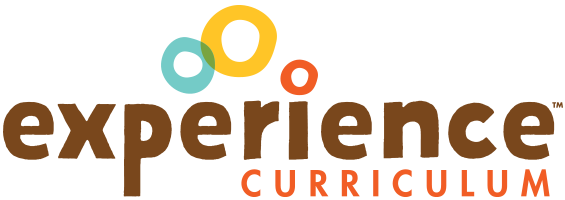Your cart is currently empty!
But I Can’t Read Yet! 3 Top Tips for Teaching Literacy
Even Infants Love Books
A child does not have to read words to be able to enjoy turning pages, pointing at pictures and establishing a foundation for future independent reading. Here are a few of our favorite teaching strategies for how to use books with preschoolers even if they can’t read the words!
Every month with Experience Preschool curriculum, educators receive a new I Can Read booklet for each child. Use the books to teach preschoolers:
- Concepts of print
- Letter/word recognition
- Reading comprehension
1. Concepts of Print
To teach concepts of print to young children, you can reference the skill continuum for tips on what children can do at different ages and levels. For example, four-year-olds may be at Benchmark 4. Research indicates that at this level “many children won’t be able to read sentences, but they could identify a few letters and even a few familiar words such as their own name, Mom, and Dad. They can even start to identify spaces between words.” Download your free skill continuum here.

When you open the I Can Read! booklet (or any storybook that you have on the shelf), go on treasure hunts. A pointer always makes hunting more fun–so give your child a special stick for book hunts. You could begin with a hunt for spaces or maybe punctuation, asking, “Can you find the period on the page?” Then try a hunt for letters.
2. Letter/Word Recognition
If you check the Skill Continuum under Letter/Word recognition, it is common for three- and four-year-olds to recognize only six or seven letters. Try focusing on the three featured letters of the month when you go on a hunt so that you reinforce these letters in a new experience. For children who are comfortable with letter recognition, you can begin to move towards word recognition.
To help you with this next step, we also include Sight Word Pointers every month with the I Can Read! booklet. After a full year of Experience Curriculum, your children will have been exposed to the pre-primary Dolch list.
QUICK FUN FACT: The Dolch Sight Words are the most commonly used set of sight words. Educator Dr. Edward William Dolch developed the list in the 1930s by studying the most frequently occurring words in children’s books of that era. Collect all of these sight word pointers and word and photo tiles so that your children can find and point at sight words in all of your storybooks or even build their own sentences with the sight word and photo tiles.
3. Reading Comprehension
Finally simply reading a story and discussing who was in it and what happened builds the foundation for future independent reading. Reading comprehension is critical to life-long literacy skills. You might notice that if you read the I Can Read! book many times, the child will be able to eventually flip the pages and re-tell most of the story from memory or by looking at the pictures.
 It is even a fun activity to have the child look at a new book and have him read it to you before you: actually read the words. This will help you see how much the child understands about:
It is even a fun activity to have the child look at a new book and have him read it to you before you: actually read the words. This will help you see how much the child understands about:
- How to hold a book
- Following the left-to-right direction of text
- Using pictures as clues to what the story might be
- Understanding simple story sequencing of beginning, middle and end
Keep reading every day with your preschoolers. New books, playful activities and tips are included in every Experience Preschool kit.

